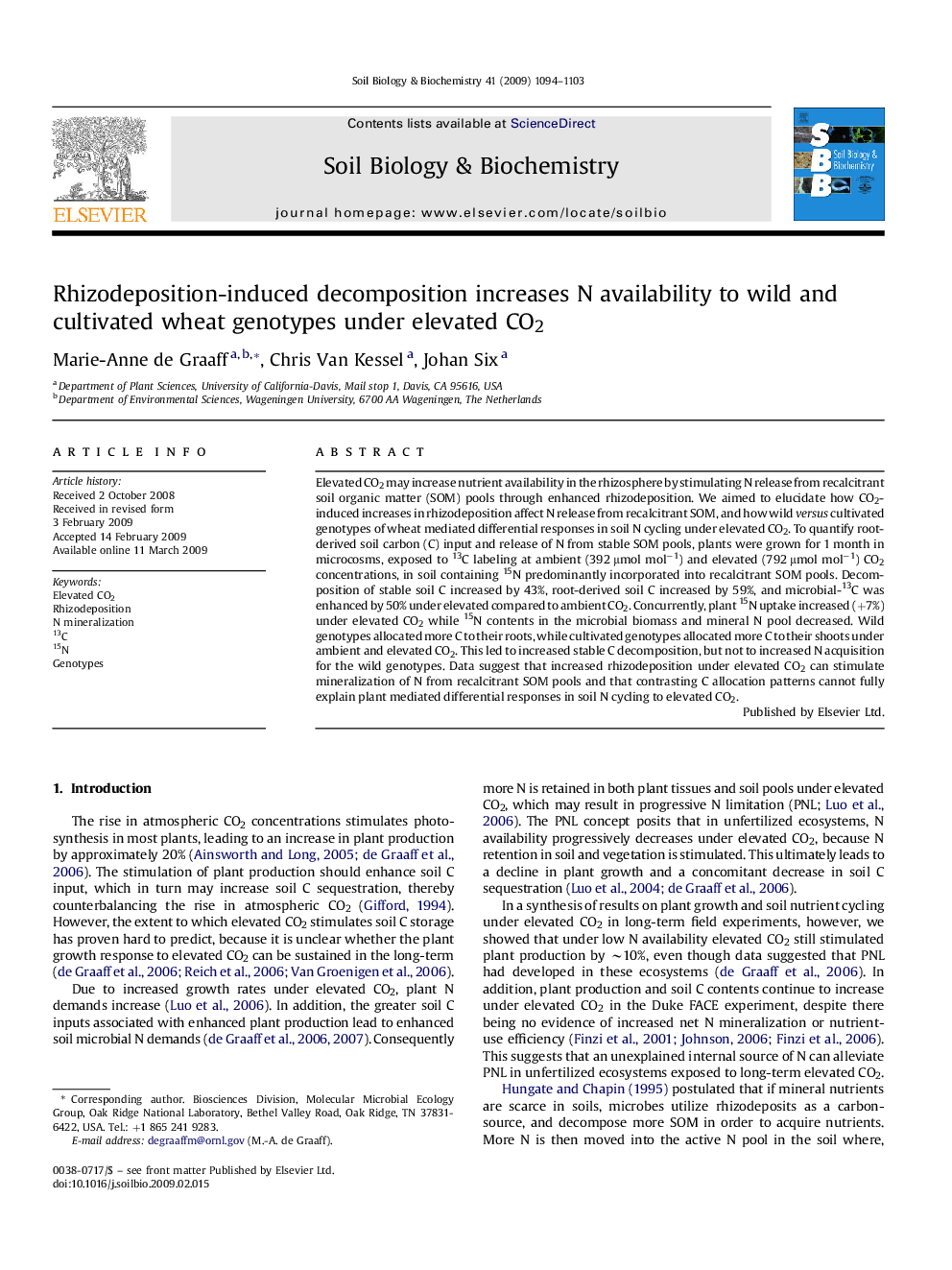| Article ID | Journal | Published Year | Pages | File Type |
|---|---|---|---|---|
| 2025608 | Soil Biology and Biochemistry | 2009 | 10 Pages |
Elevated CO2 may increase nutrient availability in the rhizosphere by stimulating N release from recalcitrant soil organic matter (SOM) pools through enhanced rhizodeposition. We aimed to elucidate how CO2-induced increases in rhizodeposition affect N release from recalcitrant SOM, and how wild versus cultivated genotypes of wheat mediated differential responses in soil N cycling under elevated CO2. To quantify root-derived soil carbon (C) input and release of N from stable SOM pools, plants were grown for 1 month in microcosms, exposed to 13C labeling at ambient (392 μmol mol−1) and elevated (792 μmol mol−1) CO2 concentrations, in soil containing 15N predominantly incorporated into recalcitrant SOM pools. Decomposition of stable soil C increased by 43%, root-derived soil C increased by 59%, and microbial-13C was enhanced by 50% under elevated compared to ambient CO2. Concurrently, plant 15N uptake increased (+7%) under elevated CO2 while 15N contents in the microbial biomass and mineral N pool decreased. Wild genotypes allocated more C to their roots, while cultivated genotypes allocated more C to their shoots under ambient and elevated CO2. This led to increased stable C decomposition, but not to increased N acquisition for the wild genotypes. Data suggest that increased rhizodeposition under elevated CO2 can stimulate mineralization of N from recalcitrant SOM pools and that contrasting C allocation patterns cannot fully explain plant mediated differential responses in soil N cycling to elevated CO2.
